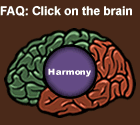Take your pick, and happy wishes in the year to come!
Almost everyone celebrates something during the winter solstice—Christmas, Hanukkah, Kwanzaa, etc.—which inevitably includes gift exchanging. Following are some suggestions that run the gamut from technical to personal growth to just plain entertainment.
Videos/DVDs
There is a “quality” undercurrent in all of these—could also be useful for retreat entertainment.
- Mindwalk—A “systems’ thinking” version of My Dinner with Andre. It never fails to blow me away.
- Tampopo—A “spaghetti western” with a Japanese version of Clint Eastwood taking a noodle-soup chef on a quality journey (Honestly!). It’s funny and insightful… and highly recommended. [In Japanese with subtitles]
- The Mozart Brothers—For those of you with an artsy streak: Mozart meets the Marx Brothers. A film for showing what “thinking outside the box” truly means. It’s way out there!
Statistics books/improvement references
General/service industry/health care
- Handbook for Improvement, Third Edition (Executive Learning Inc.)For people in health care, this is an outstanding summary of statistical and nonstatistical tools. Order through www.elinc.com. A steal at $39.95.
- Understanding Variation: the Key to Managing Chaos, Second Edition, by Donald J. Wheeler (SPC Press Inc., 1999)The power of the individuals control chart applied to managerial data.
- Statistical Methods, Eighth Edition, by George W. Snedecor and William G. Cochran (Blackwell Publishing Professional, 1989, ISBN 0813815614)A good, old fashioned book I use when I need to look up a traditional statistical technique explained clearly with good examples.
- Statistical Thinking: Improving Business Performance, by Roger Hoerl and Ron Snee (Duxbury Press, 2001)For those of you wanting an improvement slant and more depth on traditional statistics, this is an excellent reference.
- The Improvement Guide, Second Edition, by Gerald J. Langley, Ronald D. Moen, Kevin M. Nolan, Thomas W. Nolan, Clifford L. Norman, and Lloyd P. Provost (Jossey-Bass, a Wiley Imprint, 2009)If your library lacked the first edition of this handbook, here’s your chance to to make it right. This integrated approach to learning and improvement is thoroughly updated plus straightforward core ideas in diverse settings from all five original authors plus one.
- The Deming Dimension, by Henry R. Neave (SPC Press Inc., 1990, ISBN 0945320361)One of my all-time favorites. Neave’s book is a case where the “biblical concordance” (of Deming’s thinking) is far better than the original. See www.spcpress.com.
- Fourth Generation Management: The New Business Consciousness, by Brian L. Joiner (McGraw-Hill Inc., 1994)Everyone who has gone through the fad du jour, “magic bullet” training needs to read this to understand what quality improvement is truly about. Reads like a novel and hasn’t aged a bit.
More “nuts and bolts”/manufacturing
- Process Quality Control: Troubleshooting and Interpretation of Data, Fourth Edition, by Ellis
R. Ott, Edward G. Schilling, and Dean V. Neubauer (ASQ Quality Press, 2005, ISBN 0873896556)
There is no better handbook of practical statistical wisdom. - Quality Improvement Through Planned Experimentation, Second Edition, by Ronald Moen, Thomas W. Nolan, and Lloyd P. Provost (McGraw-Hill, 1999, ISBN 0079137814)The absolute best reference on factorial designs and interpretation because of its emphasis on a process context.
Culture-change skills
- Journey to the Emerald City, by Roger Connors and Tom Smith (Prentice Hall Press, 1999, ISBN 0735200521)A very practical model to deal with everyday issues around transformation.
- QBQ! The Question Behind the Question (Putnam Publishing Group, 2004, ISBN 0399152334) and Flipping the Switch, by John G. Miller (Putnam Publishing Group, 2005, ISBN 0399152954)Each of these books can easily be read in an hour… and you’ll want to give them to everybody. Miller’s technique for recognizing and dealing with “victim behavior” is profoundly simple, and I have used it time and time again to defuse tense situations with dysfunctional individuals. Order through www.qbq.com.
- Emotions @ Work: Get Great Results By Encouraging Accountability and Resolving Conflicts, by Faith Ralson (1stBooks Library, 2002, ISBN 0759674221, e-book; and ISBN 075967423X, paperback)No better book for understanding emotions in the workplace (no deep therapy) and using a focus on business results to improve organizational culture.
- The Heart of Coaching, by Thomas Crane (FTA Press, 1999)The absolute best book on deep, results-based coaching. Download the first three chapters for free at www.craneconsulting.com.
- Moving Meetings, by Jana Kemp (McGraw-Hill, 1994)It’s currently out-of-print, but used copies are easily available on Amazon. Are you wasting time in poor meetings? (Of course you are!) Get this. Now.
- Leadership IQ: A Personal Development Process Based On a Scientific Study of a New Generation of Leaders, by Emmett Murphy (John Wiley & Sons Inc., 1996)A fascinating approach to developing nine leadership “intelligences” that, taken together, allow one’s leadership abilities to take a quantum leap.
- SuperMotivation: A Blueprint for Energizing Your Organization from Top to Bottom, by Dean Spitzer (AMACOM/American Management Association, 1995)“Demotivators” are cultural elements that insidiously creep into any organization. Dealing with them is your trump card for getting cultural commitment to important changes as kind of a quid-pro-quo.
Becoming a better person
- The Tao te Ching is a 2,500-year-old Chinese book. Its 81 paragraphs of intense wisdom are profound. I’ve been studying it for more than 10 years and I own about a dozen translations.
- The Tao of Power, by R.L. Wing (Broadway, 1986, ISBN 0385196377)A very good translation with commentary after every paragraph applying it to a business environment.
- The Tao of Leadership, by John Heider (Humanics Publishing Group, 1986, ISBN 0893340790)Heider’s very loose simultaneous translation/commentary on leadership qualities is nothing short of outstanding.
- Real Power: Business Lessons from the Tao te Ching, by James A. Autry and Stephen Mitchell (Riverhead Books, 1999, ISBN 157322720X)James Autry is a former Fortune 500 executive who speaks very effectively about leadership and talks about some of his lessons. He prefers the more poetic Stephen Mitchell translation, which is easily available at any Barnes & Noble or Borders.
- Jim Clemmer has been my “stealth” mentor for more than 15 years, and he is now writing extensively on personal development. These are three of his offerings, available through his web site. They will make you go deep into yourself:
- Growing @ The Speed of Change (TCG Press, 2009)
- The Leader’s Digest (TCG Press, 2003, ISBN 0968467512)
- Growing the Distance (TCG Press, 2005, ISBN 0968467539)
- The Enneagram for hard-core self-development junkies (me included)An ancient system for personal growth summarized beautifully online. Before you even try to “type” yourself, read the modules about “THREEs” (well more than half of the CEOs in the United States are THREEs; most management motivational/leadership literature is written by THREEs for THREEs) and SIXes (most middle management; Dilbert’s boss is the archetype).
- The Enneagram Made Easy: Discover the 9 Types of People, by Renee Baron and Elizabeth Wagele (HarperOne, 1994)A deceptively simple introduction and one of the best—will probably make you squirm a bit.
- The Enneagram Movie & Video Guide, Second Edition, by Thomas Condon (Metamorphous Press, 1999, ISBN 1555521002)A very entertaining read, using selected movies and their characters to understand the nine styles’ behaviors. My daughter once gave this to me as a Christmas gift… then stole it back!
Stocking stuffers
I’ve synthesized a lot of the wisdom in the books above into a holistic approach to quality in my book, Data Sanity: A Quantum Leap to Unprecedented Results (Medical Group Management Association, 2009).
Happy shopping… and my very best wishes to you and your families for a peaceful holiday season and an “improved” 2010.


